Course
How to Support a Patient with a New Cancer Diagnosis
Course Highlights
- In this course we will learn about how nurses can support patients who are enduring a new cancer diagnosis.
- You’ll also learn the basics of the most common types of cancer, the impact of the diagnosis on the patient, and available resources.
- You’ll leave this course with a broader understanding of the importance of providing support to newly-diagnosed cancer patients.
About
Contact Hours Awarded: 2.5

Course By:
Marybeth Anderson Keppler
RN
Begin Now
Read Course | Complete Survey | Claim Credit
➀ Read and Learn
The following course content
Introduction
Cancer is the second leading cause of death both in the United States and the world and is responsible for approximately 10 million deaths worldwide each year, including over 600,000 annual cancer deaths in the United States (1, 2). In 2024, 2 million new cancer diagnoses are expected in the U.S. alone (1). By the year 2040, conservative estimates are that there will be over 27 million new cancer cases and over 16 million deaths globally each year due to longer life expectancy and aging populations (1).
With this inundation of cancer – 4 new cases and one death each minute in the U.S. alone- nurses need to be prepared to help their patients cope with a new cancer diagnosis (3).
This course is designed to walk nurses through the basics of cancer, the impact of the diagnosis on a patient, and resources for the patient and the nurse’s future reference.
Cancer Today
What is cancer? Simply put, cancer is the growing and dividing of abnormal cells without control (6). These cells can infiltrate tissues and organs, even traveling throughout the body via the circulatory or lymphatic system; this process is called metastasis (2,6). Metastases are often the cause of death for cancer patients (2).

Self Quiz
Ask yourself...
- What is your own experience with cancer?
- Why do you think cancer is so prevalent nowadays?
- How would you define cancer to a friend or a patient?
- What are some modifiable and non-modifiable risk factors for cancer?
Epidemiology
The American Cancer Society estimates that there will be nearly 2 million new cases of cancer and over 600,000 cancer-related deaths in the US in the year 2024 (1,3). The projections of cases for several types of cancer expected to be diagnosed in 2021 are as follows:
- Breast (313, 510)
- Prostate (nearly 300,000)
- Lung and bronchus (about 235,000)
- Colorectum (over 150,000)
- Skin melanoma (106, 590)
Of the types listed above, the most deaths will likely be from lung and bronchus cancer, with about 125,000 deaths expected in 2023 in the US (3).
Worldwide, this trend holds; the top five cancer killers are responsible for 5 million yearly deaths and, in order, are as follows (4):
- Lung (1.8 million)
- Colorectal (916, 000)
- Liver (830,000)
- Stomach (769,000)
- Breast (685,000)
The top five new cases worldwide, affecting over 10 million people, include the following in order of prevalence (4):
- Breast (2.26 million)
- Lung (2.21 million)
- Colorectal (1.93 million)
- Prostate (1.41 million)
- Skin (non-melanoma) (1.2 million)
Approximately 80% of all cancer patients in the US are aged 55 or older (1). In the average American’s lifetime, 39% of women and 40% of men will get a cancer diagnosis at some point (1).

Self Quiz
Ask yourself...
- Do you know anyone impacted by cancer?
- What types of cancer, if any, have you come across in your own life?
- What are the main types of cancer responsible for the most deaths worldwide?
- In your opinion, what can be done to decrease the prevalence of cancer?
Cultural Considerations
While cancer can hit anytime, anywhere, and affect anyone, not all people have equal access to diagnostic methods and subsequent care needed. Outcomes may vary drastically by race, region, and socioeconomic status as well.
For example, despite all advances in cancer research and treatment options, a Black American still has a 6% lower 5-year relative survival rate than a white American, though this rate varies greatly based on the type of cancer (1). Furthermore, mortality among African Americans is two times higher compared to Caucasian Americans when looking at prostate, stomach, and uterine cancer; for Native Americans, the mortality rate is double that of their white peers for liver, stomach, and kidney cancers (11). Compared to their white counterparts, Black women are two times more likely to die from uterine corpus cancer, and have a 41% higher mortality from breast cancer, despite a lower incidence (11).
Those most at risk of cancer diagnosis and mortality in the United States is the American Indian/Alaska Native (AIAN) population, even controlling for the small proportion of this community in the country (11).
Stunningly, nearly 70% of all cancer deaths worldwide occur in low- and middle-income countries (2). Since early diagnosis is key to a better outcome for those with cancer, people must have access to care. However, only about 20% of low-income countries have the resources to make this a possibility (2). Furthermore, poorer countries have nowhere near the diagnostic or treatment capabilities, leading to far worse patient outcomes than in wealthier nations (2).

Self Quiz
Ask yourself...
- Being aware that cultural, racial, and socioeconomic statuses negatively affect cancer patients, how will this affect your practice as a nurse (or will it)?
- What can you say to a patient from a background different from your own when they remark, “I don’t trust the doctors that I have cancer, and I’m not too sure about the treatments, either”?
Financial Implications
Receiving a new cancer diagnosis can place a financial burden on patients. Worldwide, cancer-related costs are expected to total over $25 trillion between the years 2020 and 2050 (7). In recent years, the US alone spent over $80 billion in direct medical costs related to cancer care (8). Furthermore, for under or uninsured Americans, cancer patients cannot get or afford the care they so desperately need (8).

Self Quiz
Ask yourself...
- How, if at all, can nurses help lighten the financial burden of cancer care?
- Is there a way to advocate for under or uninsured cancer patients to help them get the services they need?
Dealing with a New Cancer Diagnosis: A Case Study
Bob is a 72-year-old Caucasian man living in a large U.S. city. He is a retired truck driver and smokes a pack a day, which he has been doing since he was 18.
Bob lives with his wife, Betty, who is 68 and generally in good health. The couple has been married for 45 years. They have two children and three grandchildren, all of whom live in the same metropolitan area.
Bob is even more sedentary now than he used to be when driving his semi-truck; he feels he has put in his time on the road and should now be able to relax and enjoy the benefits of retirement.
Since retirement, Bob has lost contact with many of his work buddies and now only sees family and an old high school friend. He rarely gets out of the house, except for church on the occasional Sunday, when Betty asks him to go with her.
Bob’s diet still consists of a great deal of fast food; he loves hamburgers and fries. He is overweight, carrying most of the excess weight in his abdomen. He drinks a few beers now and then, particularly when watching sports.
One day while watching TV at home alone, Bob feels tightness in his chest. Worried he might be having a heart attack; he calls 9-1-1 and reports his acute chest pain.
Upon arrival at the local emergency department, Bob immediately gets a full cardiac workup. His troponins are negative. His EKG shows normal sinus tachycardia with occasional premature ventricular contractions (PVCs). His chest X-ray shows a normal cardiac silhouette and no signs of acute cardiac problems.
However, the radiologist notes, some spots on Bob’s left lung are concerning. The attending physician orders a CT scan, which shows two large lung infiltrates that are concerned for malignancy. Eventually, Bob is discharged with a follow-up appointment for sputum cytology and a lung biopsy.
When Bob gets home, he doesn’t tell Betty at first. She got back from a day of being with the grandchildren, and he didn’t want to bring her down. Instead, he stays quiet throughout dinner and can’t fall asleep later that night.
Weeks later, Bob decides to tell Betty about his day in the emergency department. Betty is shocked and saddened that he didn’t tell her but accompanies him to his follow-up appointment.
The biopsy results of his lung nodules both come back malignant. Upon another appointment, this time with an oncologist, Bob receives the diagnosis of stage IIIB non-small cell lung cancer (NSCLC).
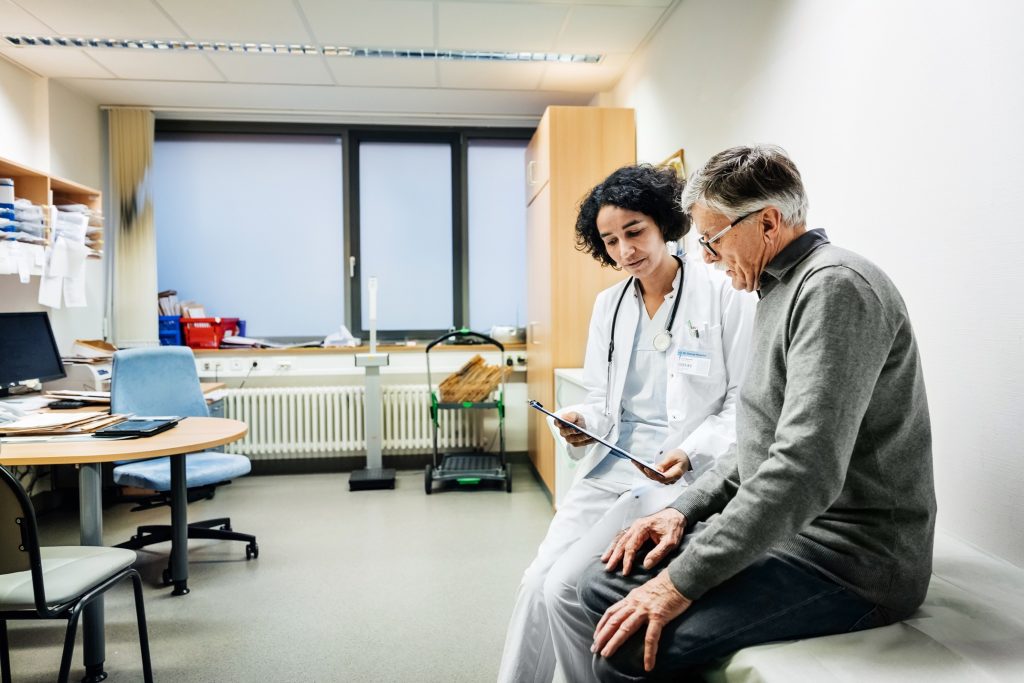

Self Quiz
Ask yourself...
- What can you as a nurse expect in your interactions with Bob?
- What risk factors do you think Bob has that could predispose him to cancer?
- What emotional and physiological needs can you anticipate for Bob?
Supporting a Patient with a New Cancer Diagnosis
Bob, like so many other patients, may feel any of a variety of emotions. These often range from anger to fear, regret, shame, despair, or denial (9).
As a nurse, it can be quite disheartening to hear of a patient’s cancer diagnosis, especially if the person is well-known among staff or in the community. For most nurses, cancer will be an ongoing presence, if only in professional life, and may seem like background noise after a point. However, it is of the utmost importance that you be aware of your feelings about cancer when striving to support a patient with a new cancer diagnosis. You will want to have an outlet for your grief, as well as a way to deal with the constant exposure to cancer diagnoses.
When taking care of the patient, you should keep in mind the following:
Don’t assume the patient feels one particular way. Every patient will react differently to a new cancer diagnosis. This can be dependent on the type and stage of cancer, the patient’s age, comorbidities, racial and cultural background, gender, and a plethora of other factors. The patient may experience a broad range of emotions that may vary minute-by-minute. Cancer is often akin to a death sentence for baby boomers, whereas younger generations may find the word less alarming due to recent advances in medicine.
The patient has likely already started looking up their prognosis. In the Information Age, you’ll be hard-pressed to find patients who haven’t started turning to “Doctor Google” for answers. Unfortunately, some patients tend to fall into the proverbial rabbit hole and become discouraged, angered, or despondent when learning about outcomes for those with their type of cancer. They may also propose some alternative treatments that have not yet undergone rigorous scientific research.
There is a whole new vocabulary for the patient (and maybe the nurse) to learn. Though the patient’s oncologist and other advanced-practice providers should be able to answer most (if not all) of the patient’s questions, you should be prepared as well. Especially if the patient is not at all familiar with the dastardly world of cancer, you’ll want to brush up on some of the following terms: metastasis, standard of care, chemotherapy, radiation, palliation, adjuvant (and neoadjuvant) therapy, immunotherapy (or biotherapy), remission, relapse, and so forth (10).
Avoid cliches, if possible. Sometimes, the worst thing a nurse can say is, “Everything will be all right,” or “You’ll be fine! Plenty of people deal with cancer every day.” Not only can these phrases invalidate the patient’s experience, but they also provide false hope or reassurance. This might be the patient’s first-ever experience with cancer, so they may rely on the nurse’s medical knowledge and be falsely reassured. This can backfire later if things do not turn out to be okay.
Sometimes presence is the best gift. Many patients, when faced with a new cancer diagnosis, may simply prefer silence from those in their hospital room. Listening might be all the person wants from you, the nurse. It’s best to let the patient take the lead on any discussion of his outcome.

Self Quiz
Ask yourself...
- How do you cope with death, dying, and loss?
- If a patient wants to talk to you about her new cancer diagnosis, how will you prepare yourself?
- Are you comfortable talking to people about cancer, death, and dying?
- What would you say to the patient’s family member who wants to know more about the diagnosis?
Assessing the Patient’s Situation
When trying to help your patient cope with the new cancer diagnosis, it is probably best to determine immediate and long-term needs by doing a quick nursing assessment.
What’s most important to your patient? Is it the fear of death? How to keep going through a daily routine? How to maintain a good quality of life?
Other concerns that might not seem as obvious are finances, health insurance (particularly what will and will not be covered as they navigate their cancer care), transportation, job loss, family role change, or additional aspects of their life you may not have initially considered (12). Additionally, many cancers are being diagnosed at earlier ages than in the past, so there may be other considerations for this population as well: childcare, job transitions, fertility preservation, and more (12).
What are some potential concerns your patient may have in this situation?
Personal support system: In Bob’s case, his wife Betty is likely his primary support person. Hopefully, his children and grandchildren will help in his situation, as well as his high school friend.
For many patients, particularly those who are widowed and/or have no children or close family, it can be an isolating experience to go through a new cancer diagnosis. People over the age of 60 will likely either rely on their family or the healthcare system for their support.
Regardless of who is in the patient’s support system, these people should be able to provide ongoing support, transportation, and general assistance. If possible, it would be helpful for support members to clarify their roles with each other, perhaps even creating a schedule for the day-to-day necessities as they relate to the patient.
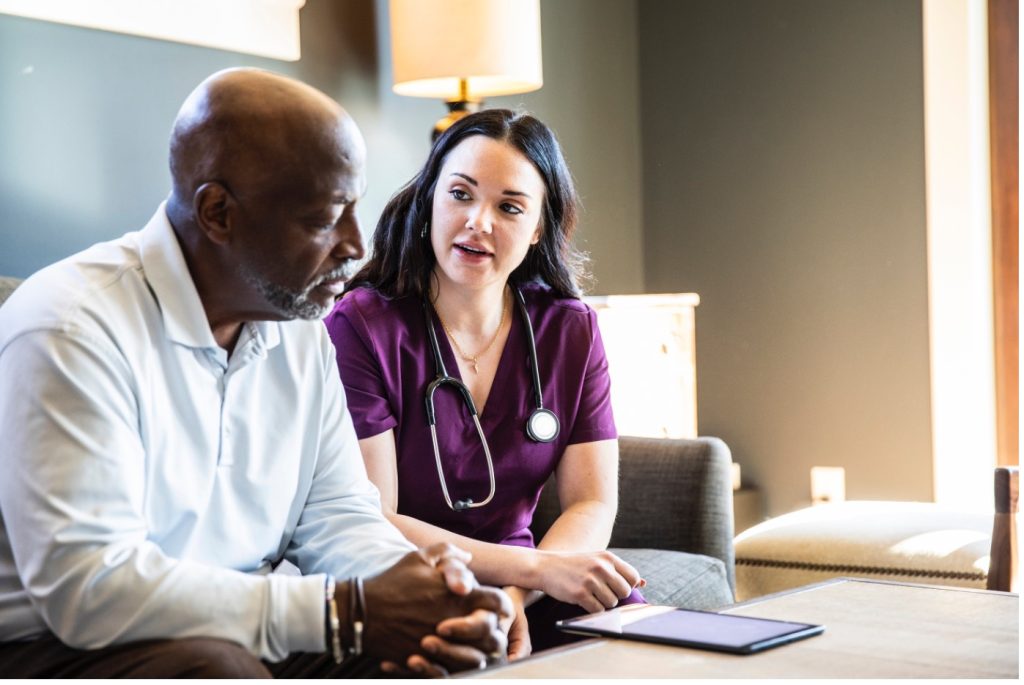

Self Quiz
Ask yourself...
- Who would you identify as your own personal support system?
- In what ways should personal support systems help a loved one?
- What duties, if any, do Bob’s family and friends have for him during this phase of his life?
Community Support
Fortunately for Bob and others like him, there are many resources available for cancer patients and those who care about them. Particularly in the time of COVID-19, online resources are available now more than ever. There are plenty of online support groups, even divided by type of cancer, caregiver role, and location. In Bob’s example, there are several support groups through the American Lung Association that can help him connect with people from across the country who are also dealing with lung cancer (13, 14).
More and more resources are coming out all the time to support cancer patients. The Cancer Support Community, American Cancer Society, and National Cancer Institute all have fantastic information and outreach programs for those afflicted with this diagnosis (15, 16, 17).

Self Quiz
Ask yourself...
- Do you know of any local resources in your area that can help provide support to cancer patients? If not, would you know how to find some to refer your patient?
Financial and Insurance Support
In the United States, roughly 29 million nonelderly people still live without reliable health insurance, which is over 10% of the US nonelderly population (18). After a new cancer diagnosis, treatment can be particularly daunting if the patient doesn’t have insurance or if they might lose their job – and thus their health insurance – due to the diagnosis and/or treatment. It is a tragedy that many cancer patients now have two enormous burdens placed on them: a harrowing new health problem and the means to finance its treatment.
Fortunately, there are some ways to help get treatment for these vulnerable patients. The American Cancer Society (ACS) can help provide rides, housing, and financial assistance to cancer patients and their families (16). Additionally, ACS provides a comprehensive guide for patients on dealing with health insurance, getting pre-approval, dealing with denied claims, and much more (20).
Hospitals are another fantastic resource for insurance and financial assistance. Hospital social workers and patient navigators can help patients get their costs covered as much as possible. Payment plans are also an option through the healthcare system where the patient seeks treatment; installation payments can be made as the patient can afford them. It’s always a good idea for a nurse to know which social services are available for their patients.

Self Quiz
Ask yourself...
- If your patient asks you, “How much of this hospital visit will my insurance cover?” What would your response be?
- Who can you direct patients to in your practice, so they can get help with insurance or payment issues?
“Why isn’t there a cure for cancer yet?”
If you’re helping a patient navigate a new cancer diagnosis, they might ask (perhaps tongue-in-cheek, perhaps earnestly), “Why haven’t we cured this yet?” The simple answer is that many different types of cancer work in many ways (19).
Five main types of cancer
In brief, the different kinds of cancer are:
- Carcinoma: affects epithelial cells found in the skin, linings of internal organs, and mucous membranes
- Sarcoma: found in connective tissue, such as bone, fat, muscle, blood vessels, and cartilage
- Leukemia: cancer that starts in the blood-forming tissue, as in the bone marrow
- Lymphoma & multiple myeloma: originate in the immune (lymphatic) system
- Central nervous system: cancers that begin in the spinal cord and brain

Self Quiz
Ask yourself...
- What are the five main types of cancer?
- How would you explain each type to your patients?
- Your patient says to you, “They haven’t cured cancer yet because it’s more profitable to keep us sick. That way they can keep making money on all those drugs.” How do you respond?
Contributing Factors for Cancer
Since there isn’t just one cause or type of cancer, there isn’t just one cure. As much as 30-50% of cancer deaths are preventable, so nurses need to be prepared to explain risk factors and ways to reduce them to their patients (2,11).
Here are some risk factors that can be prevented:
- Tobacco: responsible for 22% of global cancer deaths each year, the single most important risk factor when it comes to cancer. Lung cancer still kills many more people annually than breast, prostate, and colorectal cancers combined (11).
- Obesity/high body mass index (BMI)
- Cancer-causing infections (which can be prevented by vaccines):
- Human Immunodeficiency Virus (HIV) à Kaposi’s sarcoma
- Hepatitis B (HBV) à hepatoma (cancer of the liver)
- Human Papilloma Virus (HPV) à Cervical, rectal, and oral cancer
- Unhealthy diet
- Alcohol use
- Ultraviolet and ionizing radiation
- Urban air pollution
- Environmental exposure to toxins like asbestos, arsenic, and radon
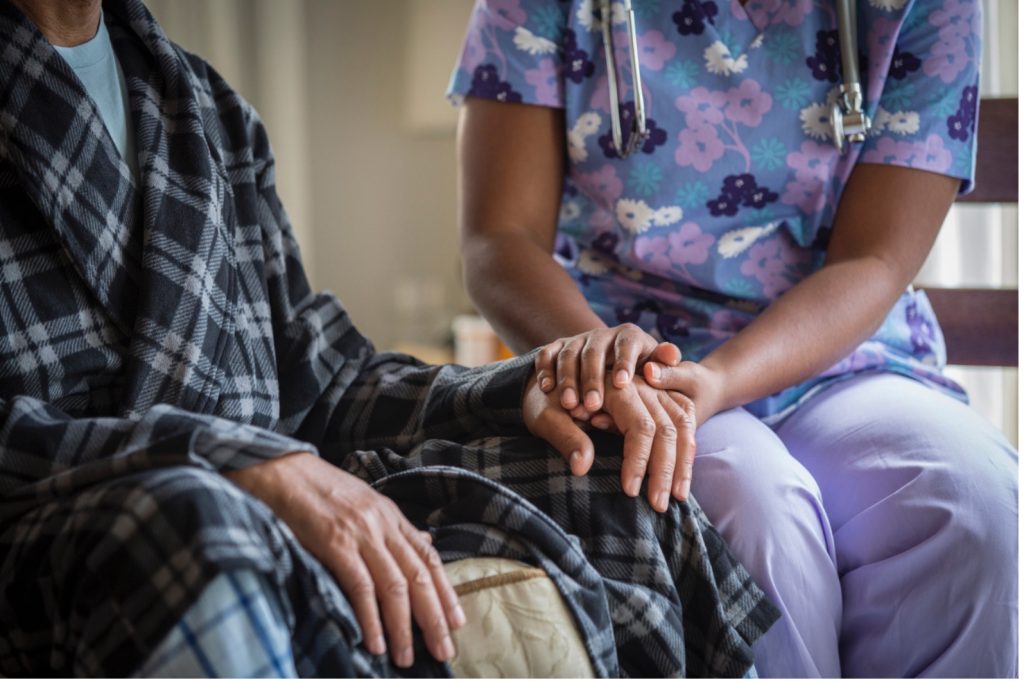

Self Quiz
Ask yourself...
- What are some preventable risk factors for cancer?
- What is the highest risk factor for all types of cancer?
- How many risk factors (if any) do you or your loved ones have?
- How would you educate your loved ones about lifestyle modifications to help reduce their risk of cancer?
Cancer Treatment
While the type of cancer usually dictates the course of treatment, these are some generalizations that might be helpful to your patient with a new cancer diagnosis:
What to Expect from Radiation
Radiation is a localized approach used to shrink tumors and kill cancer cells (20). There are two types of this treatment:
- External beam, which uses a large machine to target radiation directly at the tumor site
- Internal (also called brachytherapy), which is implanted in the body at the site of the tumor
Radiation can be used to cure cancer, shrinking tumors until they are gone (20). It can also be used as palliation to reduce pain and symptoms caused by the tumor(s). Finally, it can be used to shrink tumors before a course of chemotherapy; in this case, radiation would be referred to as adjuvant therapy, which occurs before a primary treatment.
Radiation side effects can range from irritating to debilitating, depending on where the therapy is targeted. In the case of external beam radiation, hair loss (alopecia) at the site is common, as are skin changes like sunburn (20). Radiation can also cause fatigue, nausea, vomiting, weight loss, headaches, and other changes related to the system(s) it is targeting (20).

Self Quiz
Ask yourself...
- If your patient is about to undergo external beam radiation of the head, what side effects might you anticipate for them?
- How would you help prepare a patient who needed brachytherapy?
What to Expect from Chemotherapy
Nowadays, there are many dozens of types of chemotherapy, which is a toxic medication used to kill fast-growing cancer cells. Chemotherapy is often combined with other treatments, like immunotherapy, to help the medication target cancer cells more directly and effectively (19). This topic warrants its entire course, and nurses who administer chemotherapy need to receive specialized training to handle these cytotoxic agents.
In general, though, there are many common side effects that chemotherapy can cause. Of course, this depends on the dose, the type of drug(s) used, and the cells it targets. Common side effects include:
- Fatigue
- Nausea
- Vomiting
- Diarrhea
- Anorexia
- Alopecia
- Anemia
- Cardiotoxicity
- Renal toxicity
- Peripheral neuropathy
- Hypersensitivity reactions (19)
Suppose you are taking care of a patient receiving chemotherapy. In that case, it is generally best to consult with the oncologist, nurse practitioner, or oncology-certified nurse (OCN) when learning about the treatment regimen. There are many variables involved with chemotherapy, but the more you know, the more information you can give to anxious patients.
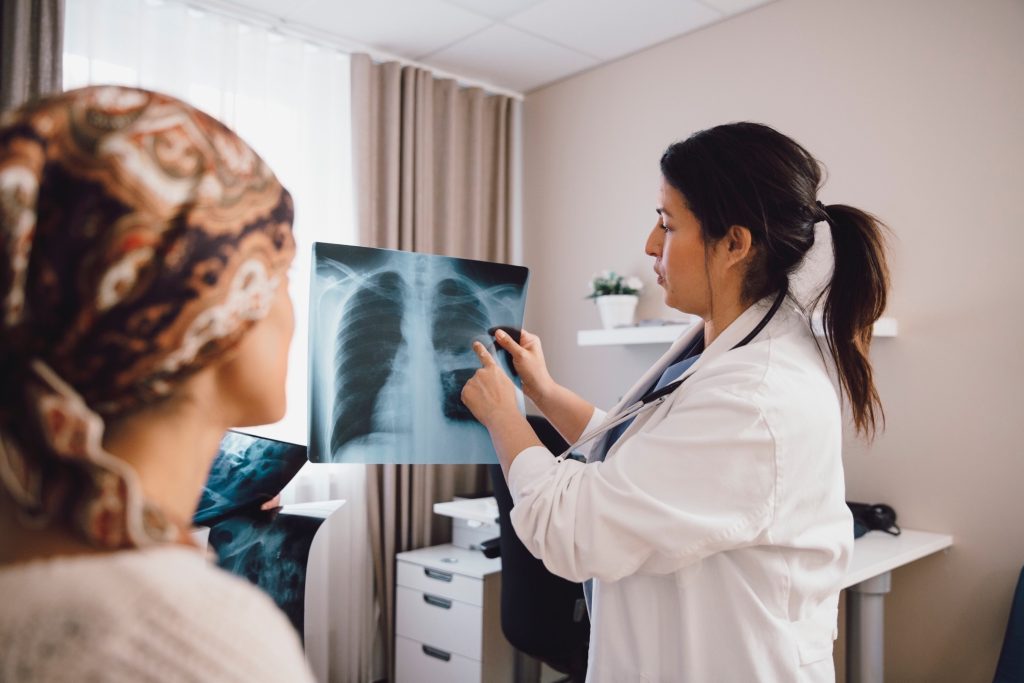

Self Quiz
Ask yourself...
- Where would you go to find reliable information about the patient’s upcoming chemotherapy regimen?
- What side effects would you warn your patient about if they were about to undergo chemotherapy?
Clinical Trials
These are an option for many patients whose first (or subsequent) line of treatment failed to effectively treat their cancer (21). There are always new clinical trials being developed, particularly in the realm of oncology. It is worth mentioning this to patients, so they at least know it’s another avenue they can pursue.
Though some patients might be hesitant to enroll in a clinical trial, they are extremely safe and carefully conducted. Patients in clinical trials often receive more testing and medical care than those who only get standard-of-care treatment.
There are several types of clinical trials, each with its own goals (21):
- Treatment: These studies include medications, combination treatments, off-label uses of current FDA-approved medications, and new approaches to surgery or radiation therapy.
- Prevention: There are two types of studies aimed at preventing cancer in the first place:
- Action: The patient usually does an intervention, such as a specific diet or exercise regimen
- Agent: The patient takes a vitamin or other medication
- Screening: These studies determine if one screening is better than another and if there is a way to detect cancer earlier than at present
- Supportive/palliative care: These studies seek to improve the quality of life for caregivers and patients, and may offer many supportive interventions like therapy, exercise, or medications to reduce symptoms.
- There are four phases of clinical trials (19):
- Phase I: This is the first time a human has been treated with an investigational drug (after animal studies). The goals here are to determine the maximum tolerated dose (MTD), drug-drug interactions, and how the body processes and excretes the drug. Usually, these studies enroll 15-60 patients.
- Phase II: This phase, enrolling more patients, determines the activity and effectiveness of the drug against one specific type of cancer and helps find side effects. Phase II trials usually have 100-300 subjects.
- Phase III: Even larger studies that compare the active drug versus a placebo. The study is randomized and usually double-blinded, meaning neither the physician nor the patient knows if the drug is real or placebo. There are typically more than 300 people on Phase III trials.
- Phase IV: These trials seek to find “off-label” uses of drugs already approved by the Food and Drug Administration (FDA). Other uses for drugs are found here, as well as long-term side effects and benefits.

Self Quiz
Ask yourself...
- What are the goals of the four phases of clinical trials?
- If your patient stated, “I don’t think clinical trials are very safe. We’re just guinea pigs,” how would you respond?
- Could a patient participate in a clinical trial without medications?
Mental Health
When treating the whole patient, psychosocial and mental health is also of paramount importance. For nurses practicing in hospitals or health centers, it is always good to know some resources for patients, regardless of their diagnoses. Social workers, case managers, nursing supervisors, nutritionists, chaplains, and patient advocates are great starting points for connecting patients with services they may need, either now or in the present.
Now what?
If your patient with a new cancer diagnosis is about to be discharged, perhaps some other topics that warrant discussion are that of long-term care. Palliative care, hospice, and other community resources can be useful to patients and their families when coping with a new cancer diagnosis.
Palliative care: Contrary to popular belief, palliative care isn’t only for the dying. The goal of palliation is to alleviate symptoms and pain as much as can be reasonably expected (22). Anyone with a chronic health problem can receive palliative care, and many healthcare centers now have palliative care teams of their own.
Hospice: While palliative care is certainly a part of hospice, it is not the only piece. To qualify for hospice care, a patient needs a prognosis of 6 months or less to live, should the disease take its natural course (22). However, many people don’t know that one can “graduate” from hospice and return to normal life. Hospice may sound like giving up on an oncology patient, but it is just one more resource they can utilize while enduring their diagnosis. Patients may come on and off hospice; it’s not just for the very end of life. It also provides respite care for family members who are helping take care of the patient. Volunteers and/or hospice staff can care for the loved one while family members can step away to rest or tend to necessary affairs.
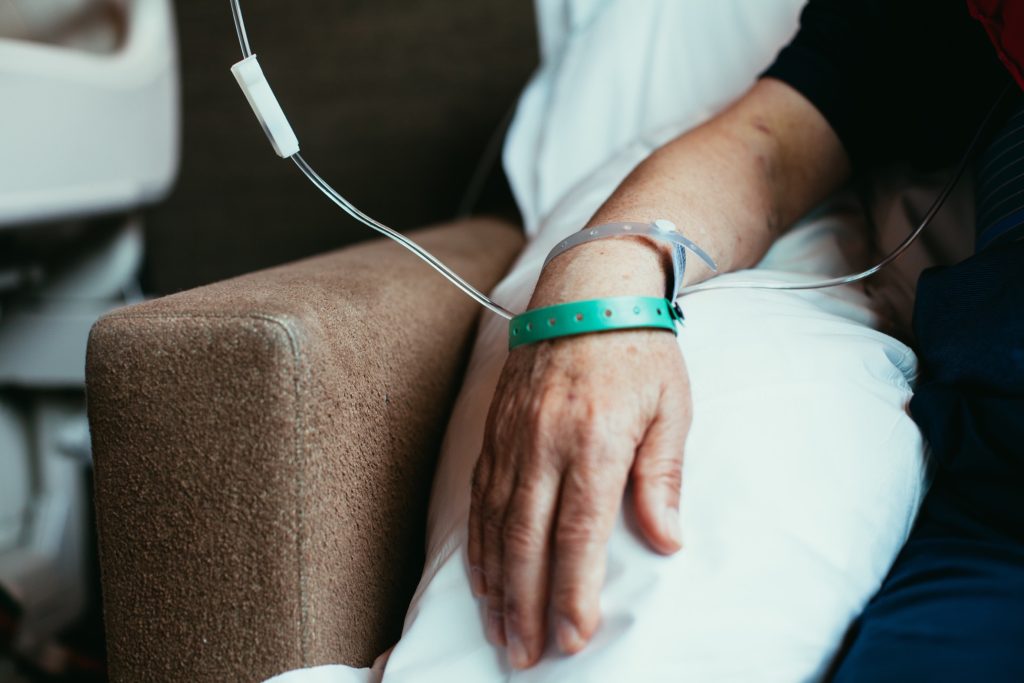

Self Quiz
Ask yourself...
- What is the difference between palliative care and hospice?
- What would you say to a patient’s family member who says, “Hospice? But I might live for another few years still!”?
- What palliative services are available (if any) where you work?
Conclusion
Cancer remains the number two killer in the world and wreaks havoc on all those effects. Patients who are newly diagnosed with this disease have unique needs of which the nurse should be aware. By understanding the main types of cancer and some of their risk factors, you will be a great asset to your patients and their loved ones. Though cancer and its treatments are complex, there are advances all the time and many resources available, both online and in individual communities. There are always opportunities for nurses and their patients to learn more information and serve as sources of support.
References + Disclaimer
- American Cancer Society (2024). Cancer Facts & Figures. Atlanta: American Cancer Society. Retrieved from https://www.cancer.org/content/dam/cancer-org/research/cancer-facts-and-statistics/annual-cancer-facts-and-figures/2024/2024-cancer-facts-and-figures-acs.pdf
- World Health Organization (WHO) (2021). Cancer. Retrieved from https://www.who.int/en/news-room/fact-sheets/detail/cancer
- American Cancer Society (2024). Cancer facts & statistics. Retrieved from http://cancerstatisticscenter.cancer.org/
- World Health Organization. (2022). Cancer. https://www.who.int/news-room/fact-sheets/detail/cancer
- World Cancer Research Fund. (2022). Worldwide cancer data. Retrieved from https://www.wcrf.org/dietandcancer/cancer-trends/worldwide-cancer-data
- National Institutes of Health (NIH): National Center for Complementary and Integrative Health (NCCIH) (2021). Cancer: In depth. Retrieved from https://www.nccih.nih.gov/health/cancer-in-depth
- Chen, S., Cao, Z., Prettner, K., Kuhn, M., Yang, J., Jiao, L., Wang, Z., Li, W., Geldsetzer, P., Bärnighausen, T., Bloom, D. E., & Wang, C. (2023). Estimates and Projections of the Global Economic Cost of 29 Cancers in 204 Countries and Territories From 2020 to 2050. JAMA Oncology, 9(4), 465–472. https://doi.org/10.1001/jamaoncol.2022.7826
- American Cancer Society. (2021). Economic impact of cancer. Retrieved from https://www.cancer.org/cancer/cancer-basics/economic-impact-of-cancer.html
- Tyrrell, P., Harberger, S., & Siddiqui, W. (2021). Stages of dying. StatPearls Publishing. Retrieved from http://www.ncbi.nlm.nih.gov/books/NBK507885/
- Cancer.net. (2021). Cancer terms. Retrieved from https://www.cancer.net/navigating-cancer-care/cancer-basics/cancer-terms
- Siegel, R. L., Giaquinto, A. N., & Jemal, A. (2024). Cancer statistics, 2024. CA: A Cancer Journal for Clinicians, 74(1), 12–49. https://doi.org/10.3322/caac.21820
- Rodriguez, T. (2024). Early-Onset Cancers Are on the Rise: Why It’s Happening and What We Can Do. Oncology Nurse Advisor. https://www.oncologynurseadvisor.com/home/cancer-types/general-oncology/early-onset-cancers-on-the-rise-why-what-we-can-do-2/
- American Lung Association. (2021). Better Breathers Club. Retrieved from https://www.lung.org/help-support/better-breathers-club?radius=undefined&category=BetterBreathersClub
- Inspire. (n.d.). Lung cancer survivors—non-small cell lung cancer—Stage III. Retrieved from https://www.inspire.com/groups/american-lung-association-lung-cancer-survivors/topic/non-small-cell-lung-cancer-stage-iii/?origin=tfr
- Cancer Support Community. (2021). Homepage. Retrieved from https://www.cancersupportcommunity.org/homepage
- American Cancer Society. (2021). ACS patient programs and services. Retrieved from https://www.cancer.org/treatment/support-programs-and-services.html
- National Cancer Institute. (2019). Taking time: Support for people with cancer [booklet]. Retrieved from https://www.cancer.gov/publications/patient-education/taking-time
- Tolbert, J., Orgera, K., & Damico, Anthony. (2020). Key facts about the uninsured population. Retrieved from https://www.kff.org/uninsured/issue-brief/key-facts-about-the-uninsured-population/
- Cancer Center Collaborative (2019). Essentials of Chemotherapy for the Oncology Nurse. Participant Handbook.
- National Cancer Institute. (2019). Radiation therapy for cancer. Retrieved from https://www.cancer.gov/about-cancer/treatment/types/radiation-therapy
- National Cancer Institute (2023). What Are Clinical Trials? https://www.cancer.gov/research/participate/clinical-trials/what-are-clinical-trials
- National Institute on Aging (2021). What Are Palliative Care and Hospice Care? from https://www.nia.nih.gov/health/hospice-and-palliative-care/what-are-palliative-care-and-hospice-care
Disclaimer:
Use of Course Content. The courses provided by NCC are based on industry knowledge and input from professional nurses, experts, practitioners, and other individuals and institutions. The information presented in this course is intended solely for the use of healthcare professionals taking this course, for credit, from NCC. The information is designed to assist healthcare professionals, including nurses, in addressing issues associated with healthcare. The information provided in this course is general in nature and is not designed to address any specific situation. This publication in no way absolves facilities of their responsibility for the appropriate orientation of healthcare professionals. Hospitals or other organizations using this publication as a part of their own orientation processes should review the contents of this publication to ensure accuracy and compliance before using this publication. Knowledge, procedures or insight gained from the Student in the course of taking classes provided by NCC may be used at the Student’s discretion during their course of work or otherwise in a professional capacity. The Student understands and agrees that NCC shall not be held liable for any acts, errors, advice or omissions provided by the Student based on knowledge or advice acquired by NCC. The Student is solely responsible for his/her own actions, even if information and/or education was acquired from a NCC course pertaining to that action or actions. By clicking “complete” you are agreeing to these terms of use.
➁ Complete Survey
Give us your thoughts and feedback
➂ Click Complete
To receive your certificate
